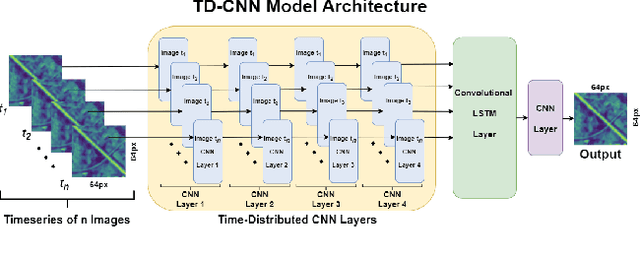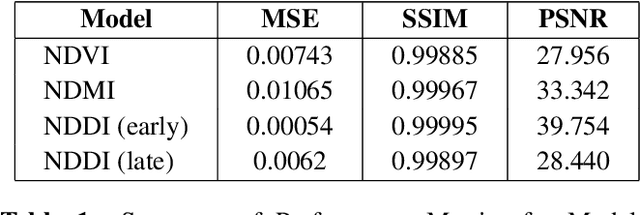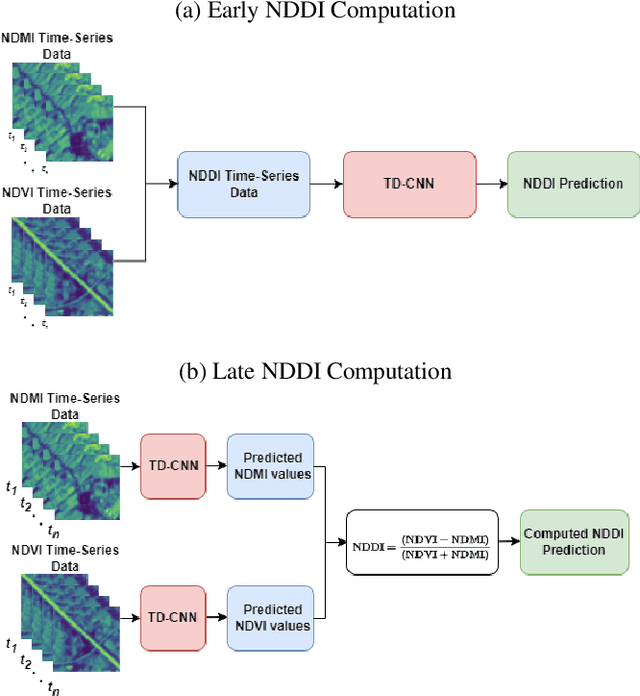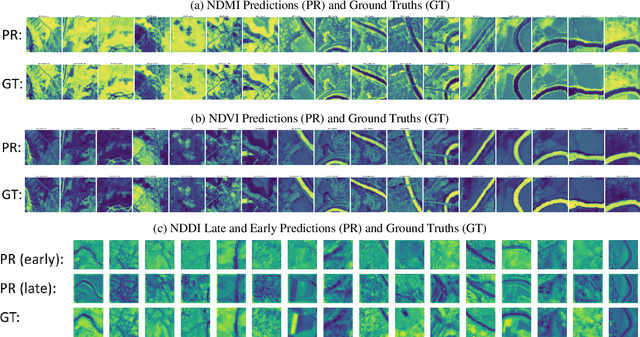A Machine Learning Approach to Long-Term Drought Prediction using Normalized Difference Indices Computed on a Spatiotemporal Dataset
Paper and Code
Feb 05, 2023



Earlier research has shown that the Normalized Difference Drought Index (NDDI), combining information from both NDVI and NDMI, can be an accurate early indicator of drought conditions. NDDI is computed with information from visible, near-infrared, and short-wave infrared channels, and demonstrates increased sensitivity as a drought indicator than other indices. In this work, we aim to determine whether NDDI can serve as an early indicator of drought or dramatic environmental change, by computing NDDI using data from landscapes around bodies of water in Europe, which are not as drought-prone as the central US grasslands where NDDI was initially evaluated on. We use the dataset SEN2DWATER (SEN2DWATER: A Novel Multitemporal Dataset and Deep Learning Benchmark For Water Resources Analysis), a 2-Dimensional spatiotemporal dataset created from multispectral Sentinel-2 data collected over water bodies from July 2016 to December 2022. SEN2DWATER contains data from all 13 bands of Sentinel-2, making it a suitable dataset for our research. We leverage two CNNs, each learning trends in NDVI and NDMI values respectively using time series of images obtained from the SEN2DWATER dataset. By using the CNNs outputs, the predicted NDVI and NDMI values, we propose to compute a predicted NDDI, with the goal of investigating its accuracy. Preliminary results show that NDDI can be effectively forecasted with good accuracy by using ML methods, and the SEND2DWATER dataset could allow to calculate NDDI as a useful method for predicting climate and ecological change. Moreover, such predictions could be highly useful also in mitigating, or even preventing, any harmful effects of climate and ecological change, by supporting policy decisions.
 Add to Chrome
Add to Chrome Add to Firefox
Add to Firefox Add to Edge
Add to Edge